Every epic franchise has to begin somewhere. George Lucas famously envisaged a sprawling space opera when he sat down to write Star Wars. That couldn’t be contained by one movie, but today’s multimedia saga wasn’t a given back in the mid-1970s.
As Lucas developed his most famous work, the story underwent many changes, and the first film was written with little idea sequels would or could happen. The saga’s sometimes hazy approach to scripts has caused a few canonical issues as it’s grown. A great example is when Lucas, never confident his first film would succeed at the box office, hired Alan Dean Foster to continue the story before Star Wars: A New Hope’s release. Foster’s 1978 novel Splinter of the Mind’s Eye had trouble sitting in canon even before Disney wiped the slate clean decades later. As Exhibit A, that book shows how change, opportunity, and luck have been crucial to the franchise’s messiest moments and greatest successes over the last 40 years.
The only things genuinely safe from canon erasure are the Star Wars movies. The core of the franchise, they are definitive and unimpeachable as much as some fans have petitioned to have them removed. That said, the saga’s tradition of releasing narratively linked trilogies hasn’t made it easy to create cohesive storylines.
Even non-trilogy films have had an uphill struggle. Rogue One endured extensive reshoots, and Solo suffered a highly publicized change of directors in the middle of production. That kind of unpredictability is just something that runs through the fabric of Star Wars.
We’re used to the struggles between the Light and Dark sides of the Force on screen, but that’s nothing to what some of the franchise’s screenwriters have had to contend with. Here are the credited writers of all the Star Wars movies.
Episode IV: A New Hope (1977) — George Lucas

When his hopes to make a Flash Gordon movie fell through, Lucas set about writing a space opera in 1973. The scrappy notes and frequent rewrites may have helped create an epic franchise rich in backstory, but it delayed his treatment. Lucas tellingly called the process “a good idea in search of a story.”
Multiple redrafts led to a sprawling script that Lucas chopped into different chapters as he focussed on a central trilogy. As he drew on numerous influences — from Akira Kurosawa’s The Hidden Fortress to Joseph Campell’s The Hero with a Thousand Faces — budget discussions and Ralph McQuarrie’s famous art concepts informed the writing process. While Lucas finished the shooting script just before production started, he rewrote it throughout filming. Tiny elements like the death of Obi-Wan were apparently late additions.
Episode V: The Empire Strikes Back (1980) — George Lucas, Leigh Brackett, and Lawrence Kasdan

Star Wars, as the first movie was then known, was a phenomenon, but the fraught experience of making the first movie was enough for Lucas to step back and leave a rough story outline in the hands of other writers. He knew the film would be darker and bigger and hired veteran science-fiction prose writer Leigh Brackett to write it. She also specialized in quick-paced screen dialogue, as in movies like 1946’s The Big Sleep. It sounded like a perfect match, but none of her dialogue is thought to have made the shooting script.
Brackett died shortly after filing her draft in 1978. While many of the components remained, Lucas disliked her characterizations and set about redrafting, although he supported her co-writer credit on the finished film while he was uncredited. Lucas later brought in Lawrence Kasdan after his work on the Lucas-produced Raiders of the Lost Ark. Kasdan, Lucas, and director Irvin Kershner hammered out the script.
Episode VI: Return of the Jedi (1983) — Lawrence Kasdan and George Lucas
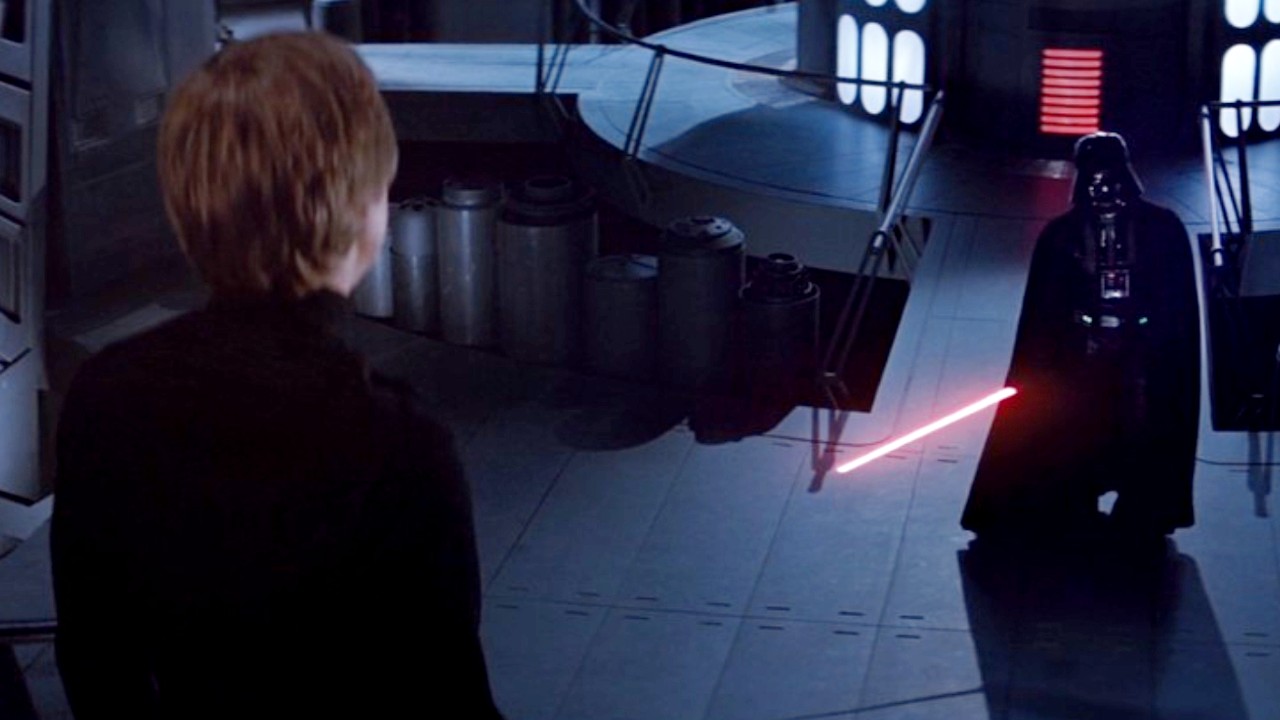
The finale of the original trilogy sounds like a slightly easier affair than its predecessors. Lucas and Kasdan reunited to pen the third film, with uncredited input from screenwriter David Peoples and director Richard Marquand. Still, the script only arrived after the production’s schedule and budget had been created.
For the shooting script, Lucas, Kasdan, Marquand, and producer Howard Kazanjian conferenced for two weeks before Kasdan pulled it together from tape transcripts.
Episode I: The Phantom Menace (1999) — George Lucas

Lucas returned to his broad story arc for the prequel movies. The narrative and popularity of the original trilogy meant these stories had to center on Darth Vader’s fall. To tell it, technological advances and a considerable budget increase meant Lucas could finally realize the epic scale he initially intended.
The result dropped the simplicity of the earlier movies and wove together multiple plot strands. It took a while to write, meaning it ran concurrently with pre-production. The project was too daunting for other directors, so Lucas picked up the megaphone three years after beginning the writing process.
Episode II: Attack of the Clones (2002) — George Lucas and Jonathan Hales
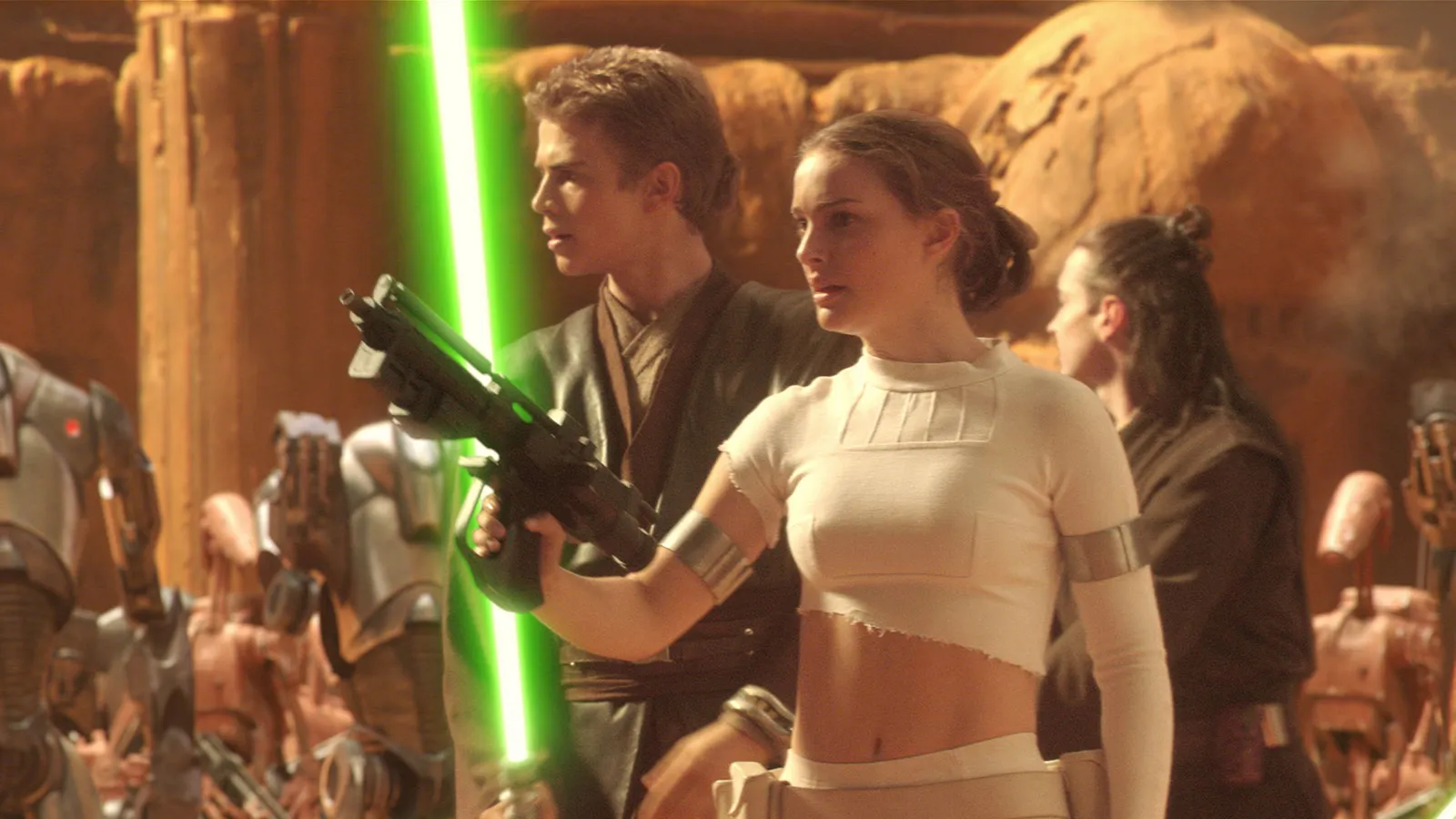
The Phantom Menace‘s gave Lucas pause when it came to scripting the second part of the confirmed trilogy. Despite a three-year release window, that hugely affected writing and production.
Sets and costumes were confirmed without a script; Lucas only completed a rough draft three months before filming. He subsequently brought in British TV writer Jonathan Hales for the third draft, handed in one week before photography started.
Episode III: Revenge of the Sith — George Lucas
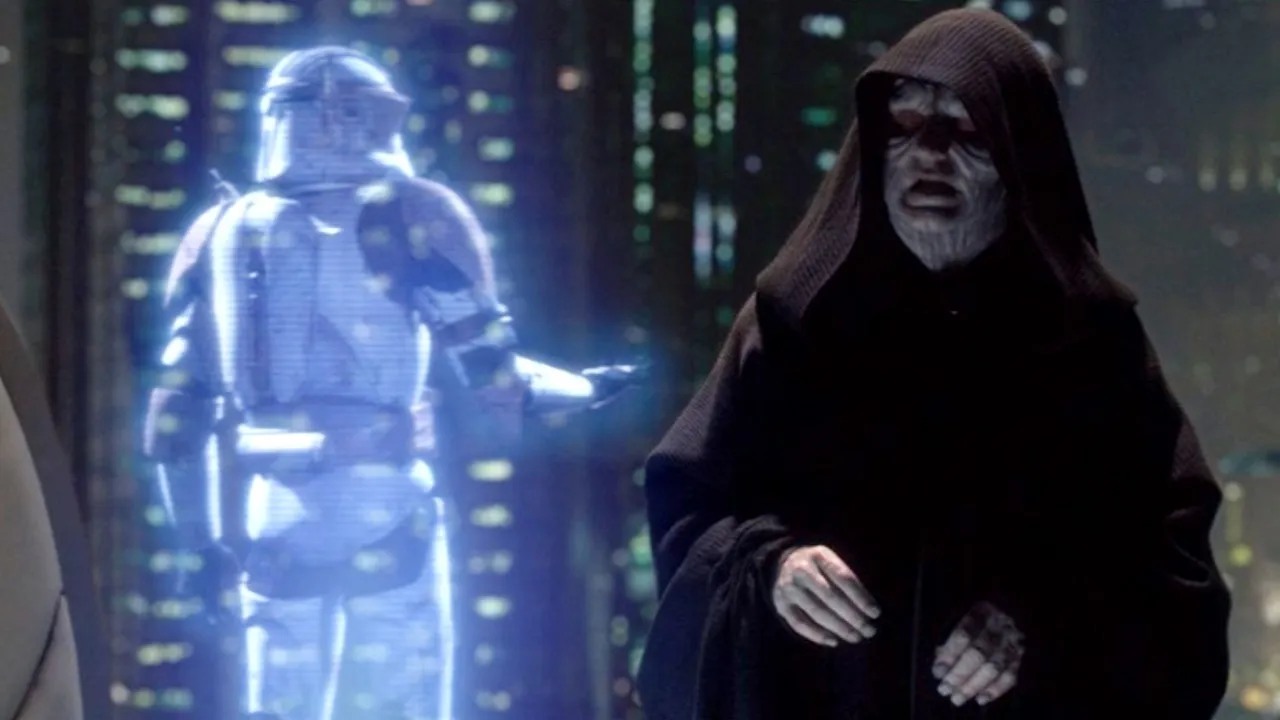
While Lucas developed his prequel trilogy from overarching plot points, Revenge of the Sith was the most fully formed, thanks to the then-canonical tie-ins that had grown since Return of the Jedi. Arguably the most successful prequel film, thanks to its momentum and structure, Lucas began writing the script before Attack of the Clones was released.
Lucas was most preoccupied with balancing Anakin Skywalker’s fall to the Dark Side. As we know, the result lent heavily to the young Jedi’s forbidden love for Padme.
Episode VII: The Force Awakens (2015) — J. J. Abrams, Lawrence Kasdan, and Michael Arndt

The first Star Wars movie without George Lucas’s direct involvement — no biggie. Of course, there were copious notes, although Lucas maintains he had no involvement with the film after Disney rejected his sequel trilogy treatment.
The first screenplay was written by Michael Arndt from a writers’ room comprising Simon Kinberg, Pablo Hidalgo, Kiri Hart, and original trilogy veteran Kasdan. When the production couldn’t spare Arndt’s time to fine-tune his script, Kasdan and recently-confirmed director J.J. Abrams took over. They completed a new draft in six weeks, although hopes that plot points would be carried through the trilogy and create a more cohesive narrative than previous installments were starting to fade.
Rogue One: A Star Wars Story (2016) — Chris Weitz and Tony Gilroy

During the filming of Episode III, visual effects supervisor John Knoll suggested this idea for the mooted Star Wars: Underworld series. Under Disney’s stewardship, the concept that drew on a throwaway line in A New Hope was upgraded.
Video games designer and journalist Gary Whitta helped Knoll develop the story and hand in a script before Chris Weitz came onboard to produce the shooting script. Late in production, Tony Gilroy scripted the film’s extensive reshoots and oversaw the theatrical cut.
Episode VIII: The Last Jedi (2017) — Rian Johnson

American writer-director Rian Johnson entered talks to pen Episode VIII in the summer of 2014. He became the only filmmaker other than George Lucas to write a Star Wars feature on his own.
Typically, Johnson drew on numerous references from his vast industry knowledge to shape a distinctive movie, although it wasn’t to everybody’s tastes. Mark Hamill publicly questioned his treatment of Luke Skywalker, and it remains one of the franchise’s most divisive entries.
Solo: A Star Wars Story (2018) — Jonathan Kasdan & Lawrence Kasdan
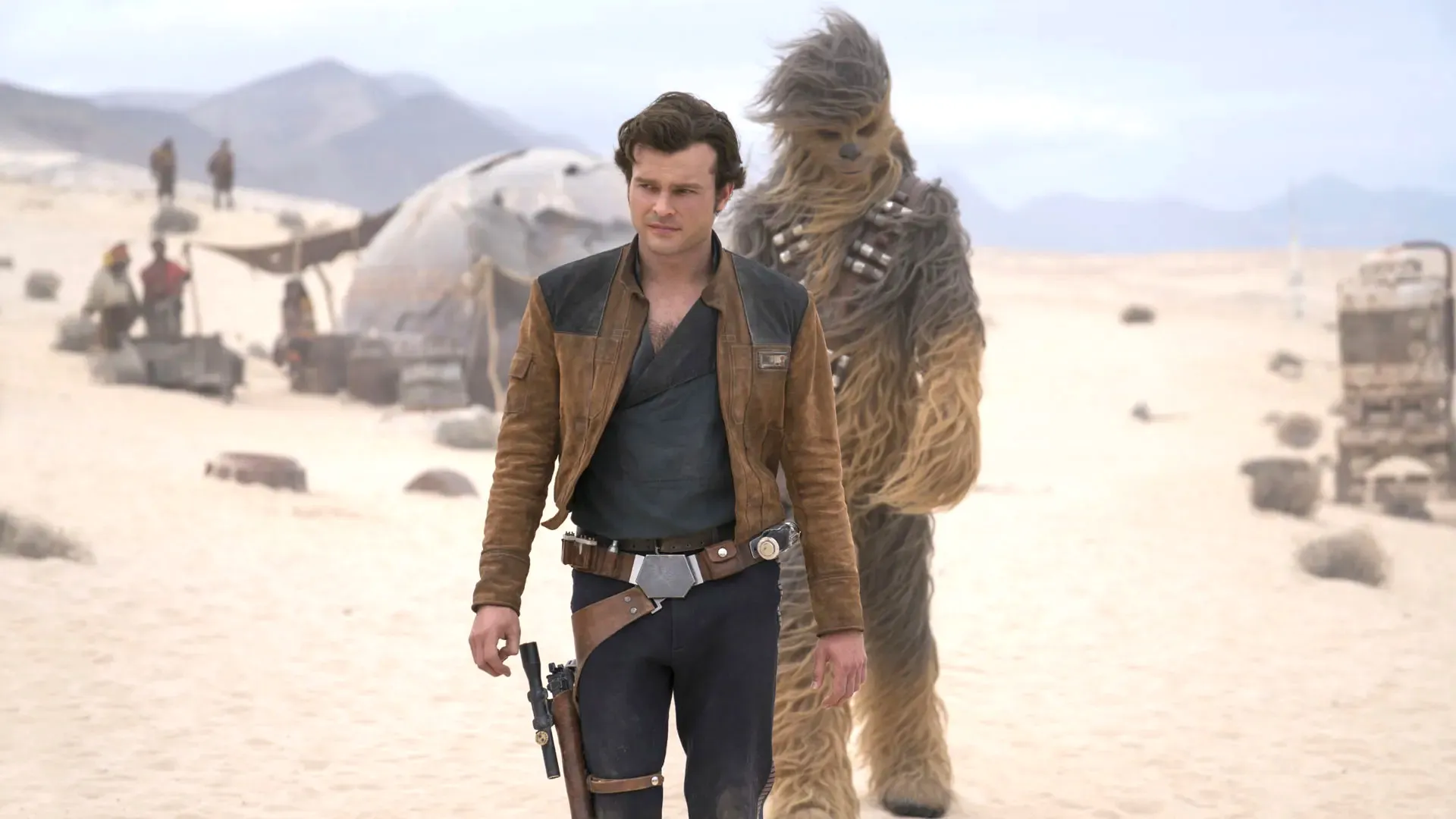
The original Star Wars trilogy was packed with characters that captured the imagination. Young Han Solo narrowly avoided a cameo in Episode III, but a Solo spin-off had been in development since 2012 when Lucas hired Kasdan to pen the screenplay.
The project survived Lucasfilm’s acquisition, but Kasdan passed the baton to his son Jonathan when he crossed over to write The Force Awakens. Solo’s tumultuous production and disappointing box office ultimately overshadowed the script.
Episode IX: The Rise of Skywalker (2019) — Colin Trevorrow, Derek Connolly, Chris Terrio, and J. J. Abrams

Disney’s time in charge of the Star Wars franchise has been fraught. Rumors that Rian Johnson would pen the final two installments lasted until Colin Treverrow — fresh from his success rejuvenating a certain dinosaur franchise — was hired to direct and write alongside his long-term collaborator Derek Connolly. Creative differences saw the pair depart two years later, leaving the longest writing credits in the saga’s history. Unworkable scripts after multiple drafts were said to have left Lucasfilm president Kathleen Kennedy unimpressed, even after Jack Thorne was brought on for rewrites.
With Abrams confirmed as a replacement director, he joined forces with Chris Terrio to rewrite the script, despite the pair having never previously worked together. A further challenge came from studio-imposed plot points and the need to accommodate the untimely death of Carrie Fisher. Despite early good intentions, the sequel trilogy stands as the least cohesive Star Wars trilogy.

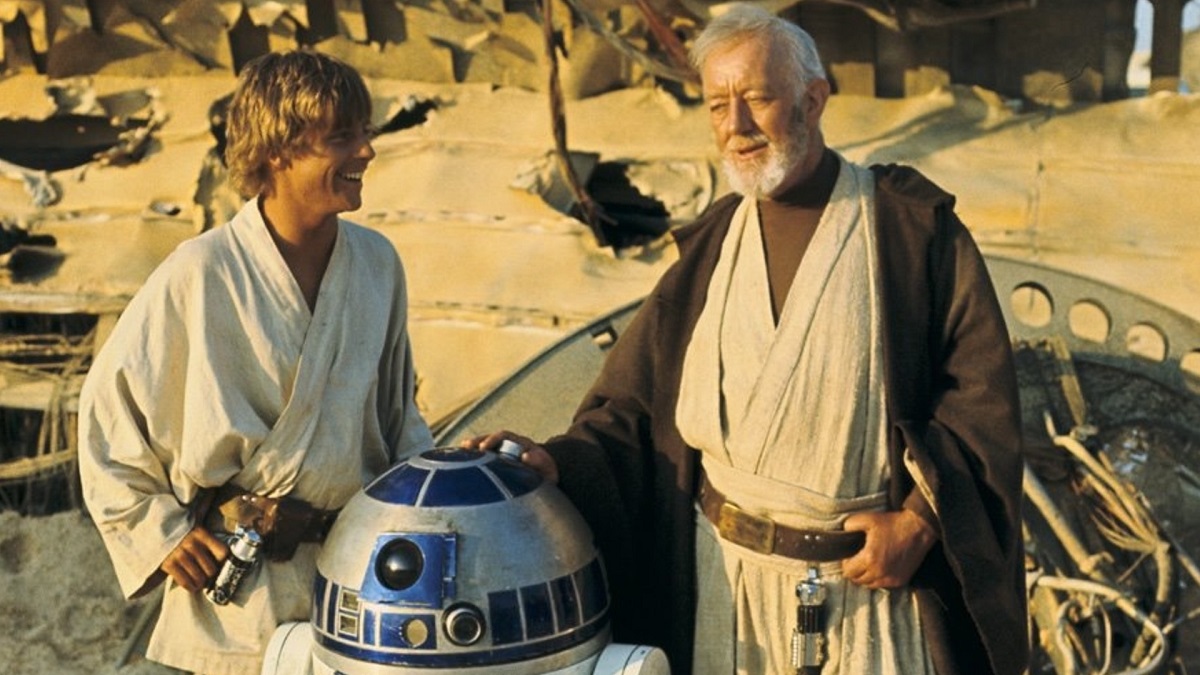









Published: Aug 1, 2022 12:18 pm